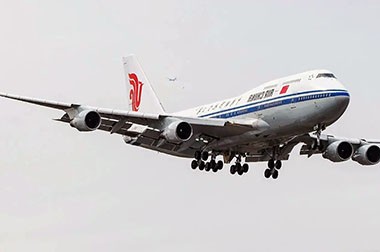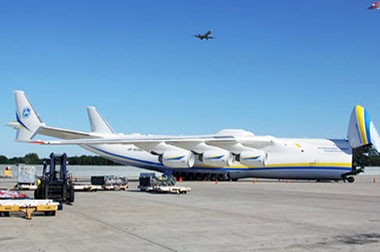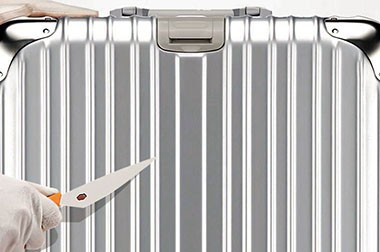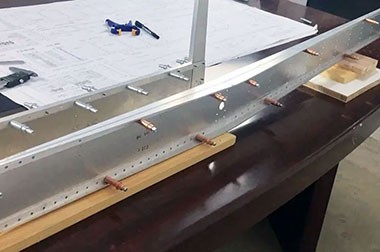7050 T7651 Aluminum plate
7050 T7651 aluminum is a high-performance alloy suitable for high-stress, high-demand aerospace applications. It excels in strength, corrosion resistance, fatigue resistance, and weldability, making it one of the commonly used materials for aerospace structural components.
7050 T7651 aluminum is a high-strength aerospace aluminum alloy, commonly used in structural components in the aerospace field. Its unique T7651 temper is achieved through a series of heat treatment processes and artificial aging, offering exceptional strength and stress corrosion resistance, making it suitable for critical aerospace components that require high strength and corrosion resistance.
7050-T7651 aluminum plate is a specially treated high-strength aerospace-grade aluminum alloy sheet, offering outstanding advantages in performance and durability.
7050-T7651 aluminum plate is a high-strength aluminum alloy material belonging to the 7050 series. This alloy is primarily used in applications requiring high strength and excellent corrosion resistance, such as aerospace, automotive, and high-performance structural components.
7050-T7651 Aluminum Alloy Information
| Property | Description |
| Material Name | 7050-T7651 Aluminum Alloy |
| UNS | A97050 |
| ISO Standard | AlZn6CuMgZr |
| AA (Aluminum Association) | AA7050-T7651 |
| Main Components | Zinc (Zn), Magnesium (Mg), Copper (Cu), Zirconium (Zr) |
| Temper | T7651 |
| Strength Grade | High Strength |
| Applications | Aerospace, Automotive, High-Performance Structural Components |
| Characteristics | Excellent Corrosion Resistance, Good Machinability, Maximum Strength |
| Processing Methods | Solution Heat Treatment, Stress Relief, Artificial Overaging |
Basic Features of 7050 Aluminum Alloy
- Alloy Composition: The primary alloying element in 7050 aluminum alloy is zinc (Zn), with small amounts of magnesium (Mg) and copper (Cu), giving it excellent strength, corrosion resistance, and workability. It belongs to the aluminum-zinc alloy series and is mainly used in aircraft structures, wings, and skin components.
- High Strength and Low Density: 7050 aluminum alloy has high strength and low density, making it suitable for applications where reducing the weight of the aircraft is important.
Heat Treatment Process of T7651 Temper
- Solution Heat Treatment: During the processing of 7050 aluminum, it first undergoes a solution heat treatment process, which involves heating the alloy to a high temperature to allow the dissolved solute to evenly distribute, laying the foundation for subsequent aging treatment.
- Stress Relief: After the solution heat treatment, 7050 aluminum alloy requires stress relief to reduce residual internal stresses from processing or cooling. This process is typically done by heating the alloy to an appropriate temperature, holding it for a certain period, and then slowly cooling it.
- Artificial Aging: After completing the solution heat treatment and stress relief, 7050 aluminum undergoes artificial aging. This process is performed at lower temperatures to stabilize the precipitate phase in the alloy, further enhancing its mechanical properties and corrosion resistance. T7651 temper of 7050 aluminum typically undergoes a longer aging process to ensure that its mechanical properties reach optimal levels.
Characteristics of 7050 Aluminum in T7651 Temper
- High Strength: Compared to other heat treatment conditions of 7050 aluminum, the T7651 temper offers higher strength, especially in high-load aerospace applications.
- Excellent Stress Corrosion Resistance: 7050 aluminum in the T7651 temper has exceptional stress corrosion crack growth resistance, making it ideal for aerospace components exposed to high-stress environments for long durations, particularly in critical parts such as wings and fuselage frames.
- Good Weldability: Despite its high strength, 7050 T7651 aluminum retains good weldability, making it suitable for some structural welding applications.
- Fatigue Resistance: Thanks to its uniform material structure and stable aging effects, 7050 T7651 aluminum alloy exhibits excellent fatigue resistance, making it suitable for aerospace components subjected to repetitive stress loads.
7050-T7651 Aluminum Plate Applications
7050-T7651 Aluminum Plate in Aerospace Applications
Wing Beams, Fuselage Frames, and Skin:
7050-T7651 aluminum plate is widely used in wing beams, fuselage frames, and skin components in aircraft, meeting the strict requirements for high strength and lightweight in the aerospace field. The use of aluminum plate in these structures helps reduce the overall weight of the aircraft while ensuring the strength and rigidity of the structure, ensuring the safety and stability of the aircraft during high-load and long-duration flights.
Landing Gear Components:
The use of 7050-T7651 aluminum plate in landing gear components provides excellent fatigue resistance and corrosion resistance. The landing gear, which is the critical part of an aircraft that makes contact with the ground, bears significant impact forces and stresses, particularly during takeoff and landing. The high strength of 7050-T7651 aluminum allows it to withstand repeated loads and impacts, while its excellent corrosion resistance extends the lifespan of the components.
7050-T7651 Aluminum Plate in Military Equipment Applications
Key Components in Military Aircraft and Missiles:
In military equipment, 7050-T7651 aluminum plate is used in key components of military aircraft and missiles, such as fuselage frames, wings, engine skins, and other load-bearing parts. Due to its outstanding corrosion resistance and high strength, 7050-T7651 aluminum plate can withstand extreme temperatures, pressures, and corrosive environments, ensuring the reliability and service life of military equipment in various complex combat conditions.
7050-T7651 Aluminum Plate in High-Performance Industrial Equipment Applications
High-Precision Mold Manufacturing and Heavy Machinery Load-Bearing Components:
7050-T7651 aluminum plate is used in high-performance industrial equipment primarily for manufacturing high-precision molds and heavy machinery load-bearing components. Its high strength and fatigue resistance make it an ideal material for components subjected to complex mechanical loads and long-term operation. In mold manufacturing, 7050-T7651 aluminum plate provides excellent wear resistance and compressive strength, ensuring the processing quality and lifespan of precision molds. In heavy machinery components, it can withstand high mechanical pressures and repeated loads, ensuring the structural stability and reliability of the components.
7050 T7651 aluminum is a high-performance alloy suitable for high-stress, high-demand aerospace applications. It excels in strength, corrosion resistance, fatigue resistance, and weldability, making it one of the commonly used materials for aerospace structural components.
7050-T7651 Aluminum Plate Processing
Processing Methods
- Solution Heat Treatment: Strengthens the material by dissolving alloying elements through heating.
- Stress Relief: Improves material stability by stretching to remove internal stress.
- Artificial Overaging: Optimizes mechanical properties and corrosion resistance by controlling temperature and time.
Tensile Stress Control
The plate typically undergoes a certain proportion of tensile stress relief, ensuring flatness and deformation resistance after machining.
Weldability and Surface Treatment
Compared to some other aluminum alloys, its weldability is relatively weaker but can be improved through anodizing, electroplating, or coatings to enhance surface protection.
7475 T651 Aluminum Mechanical Properties
| Mechanical Properties | |||
| Hardness, Brinell | 150 | 150 | 500 kg load with 10 mm ball. Calculated value. |
| Hardness, Knoop | 190 | 190 | Converted from Brinell Hardness Value |
| Hardness, Rockwell A | 53.5 | 53.5 | Converted from Brinell Hardness Value |
| Hardness, Rockwell B | 87 | 87 | Converted from Brinell Hardness Value |
| Hardness, Vickers | 175 | 175 | Converted from Brinell Hardness Value |
| Ultimate Tensile Strength | 586 MPa | 85000 psi | AA; Typical |
| Tensile Yield Strength | 510 MPa | 74000 psi | AA; Typical |
| Elongation at Break | 13% | 13% | AA; Typical; 1/2 in. (12.7 mm) Diameter |
| Modulus of Elasticity | 71.7 GPa | 10400 ksi | AA; Typical; Average of tension and compression. Compression modulus is about 2% greater than tensile modulus. |
| Poisson's Ratio | 0.33 | 0.33 | |
| Machinability | 70% | 70% | 0-100 Scale of Aluminum Alloys |
| Shear Modulus | 27 GPa | 3920 ksi | |
| Shear Strength | 350 MPa | 50800 psi | Calculated value. |
7475 T651 Aluminum Electrical Properties
| Electrical Properties | |||
| Electrical Resistivity | 4.99e-006 ohm-cm | 4.99e-006 ohm-cm | AA; Typical at 68°F |
7475 T651 Aluminum Physical Properties
| Physical Properties | Metric | English | Comments |
| Density | 2.81 g/cc | 0.102 lb/in³ | AA; Typical |
7475 T651 Aluminum Thermal Properties
| Thermal Properties | |||
| CTE, linear 68°F | 23.2 µm/m-°C | 12.9 µin/in-°F | AA; Typical; Average over 68-212°F range. |
| CTE, linear 250°C | 25.2 µm/m-°C | 14 µin/in-°F | Average over the range 20-300ºC |
| Specific Heat Capacity | 0.88 J/g-°C | 0.21 BTU/lb-°F | Estimated from trends in similar Al alloys. |
| Thermal Conductivity | 138 W/m-K | 960 BTU-in/hr-ft²-°F | AA; Typical at 77°F |
| Melting Point | 477 - 635 °C | 890 - 1175 °F | AA; Typical range based on typical composition for wrought products 1/4 inch thickness or greater |
| Solidus | 477 °C | 890 °F | AA; Typical |
| Liquidus | 635 °C | 1175 °F | AA; Typical |
7475 T651 Aluminum Processing Properties
| Processing Properties | |||
| Annealing Temperature | 413 °C | 775 °F | |
| Solution Temperature | 516 °C | 960 °F | must be preceded by soak at 870 to 890°F |
| Aging Temperature | 121 - 177 °C | 250 - 350 °F | |










